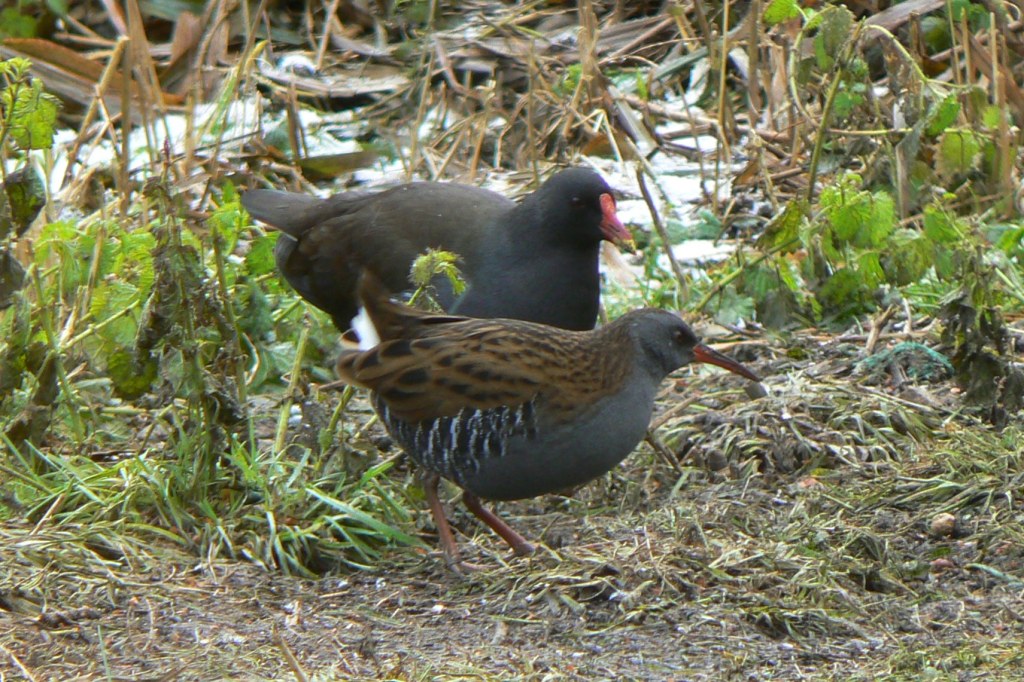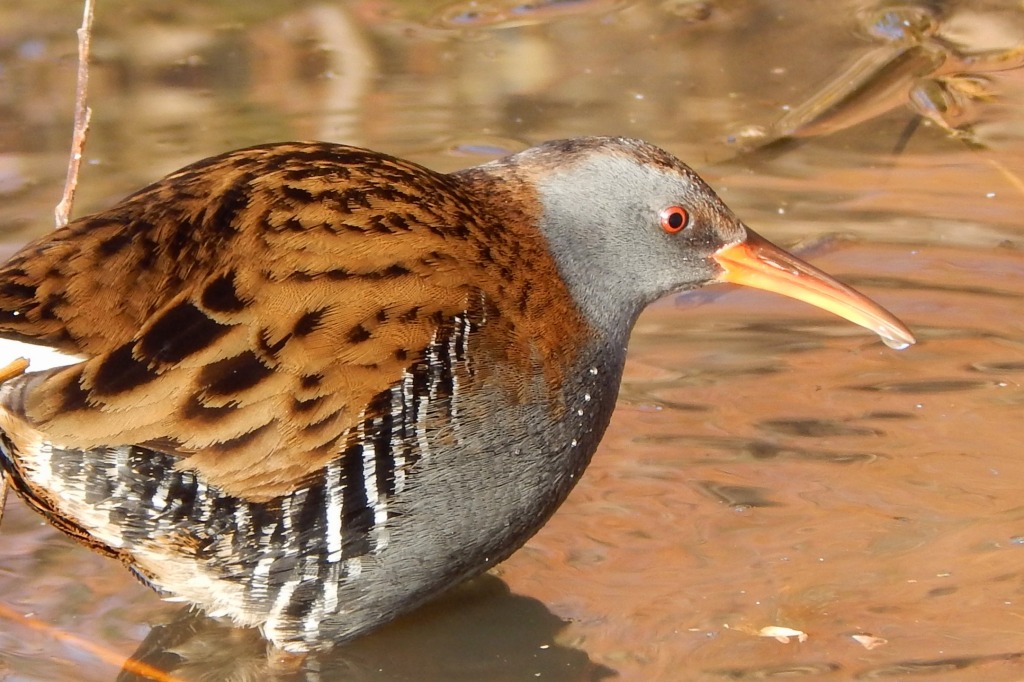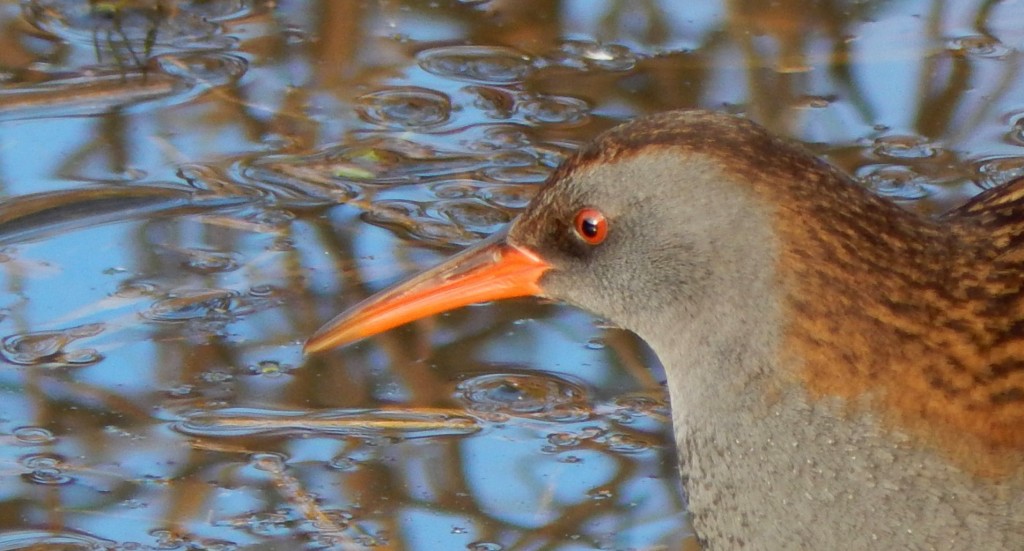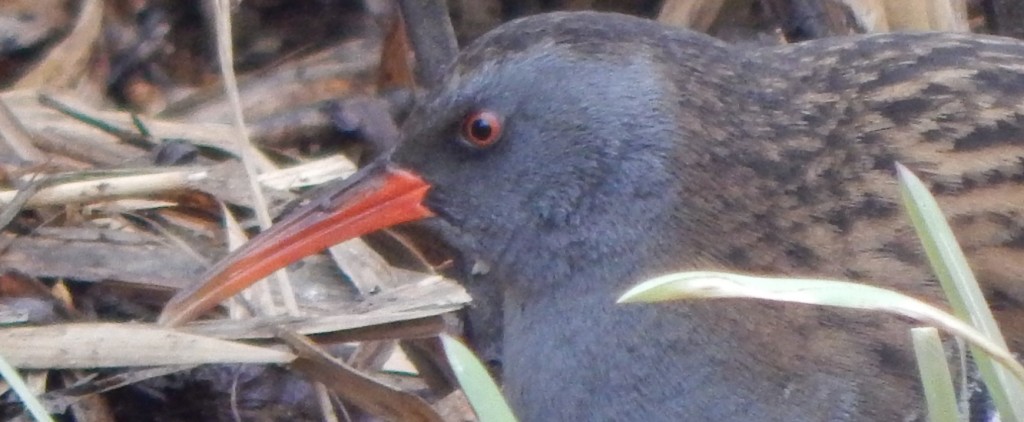
[294] Rallus aquaticus, Water Rail
Introduction
Rallus aquaticus, the Water Rail, is a relative of [152] the Coot and [157] the Moorhen but is rarer and keeps well away from humans. You may see them in carefully controlled areas where they are attracted to bird feeders in winter.
Other species in the genus Rallus are called Rails and so are many species in the wider family Rallidae.
Taxonomy
Kingdom – Animals
Phylum – Chordates
Class – Aves (Birds)
Order – Gruiformes (Cranes and Rails)
Suborder – Ralli
Family – Rallidae (Rails, Coots, Moorhens, Crakes and Gallinules)
Genus – Rallus
Scientific Name – Rallus aquaticus
Name
Rail is an Anglicized version of the French rale, which comes from Medieval Latin rallus, possibly from its harsh cry. I will let you work out aquaticus.
Description
The Water Rail does not look immediately similar to a Coot or a Moorhen. It is a smaller, more slender bird with a long, pointed bill and long legs. Its laterally flattened body helps it to walk through reeds.
Its upperparts are a stripy mottled dark and light brown. Its underparts are from blue-grey to blue, with black barring on its flanks. Its bill is from red to orange, somewhat darker on top. The legs have long toes but are not webbed.

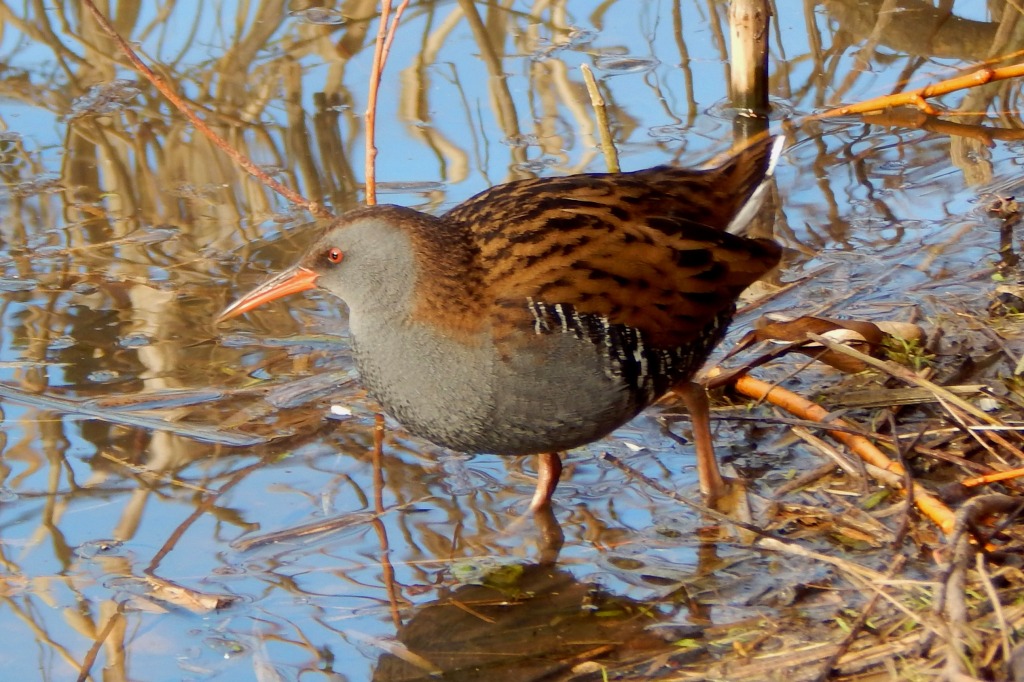
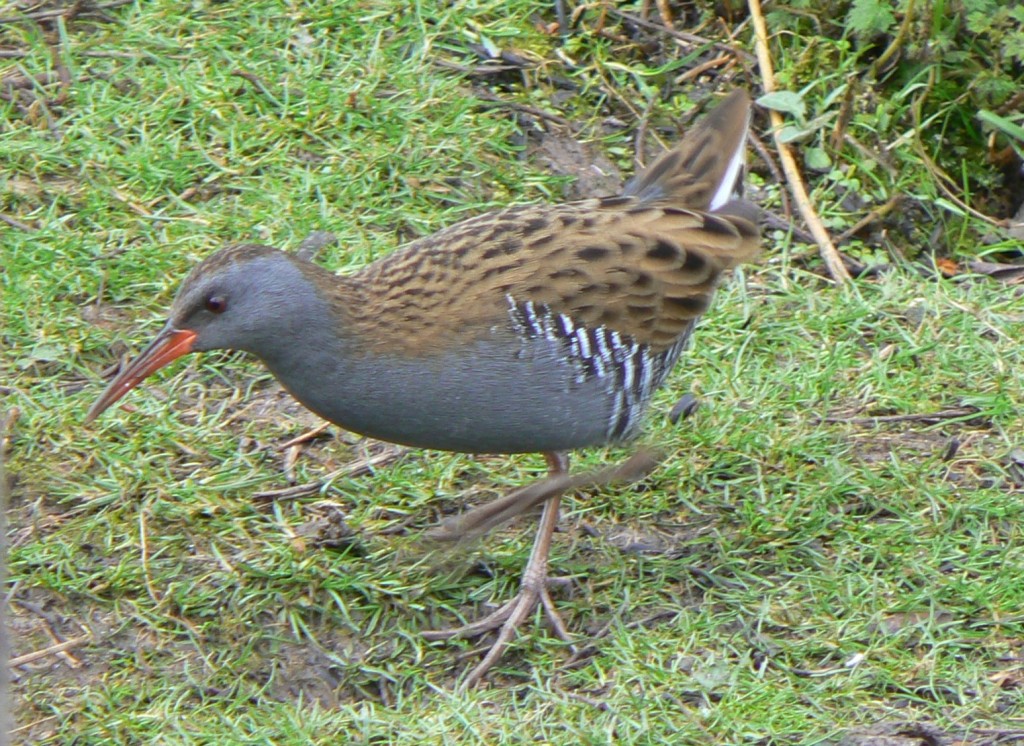
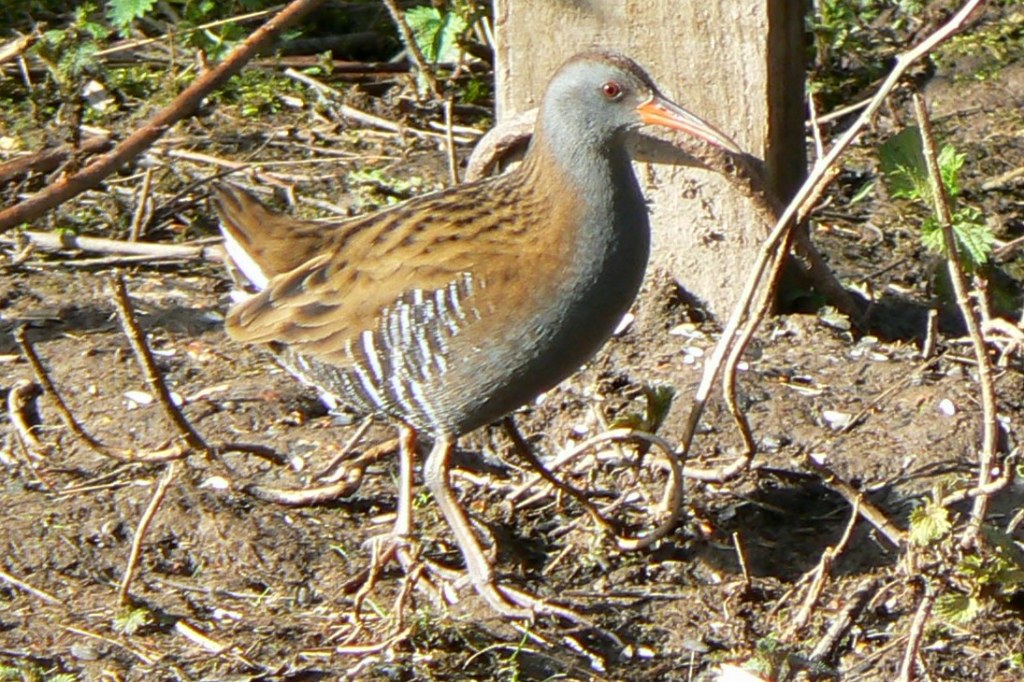

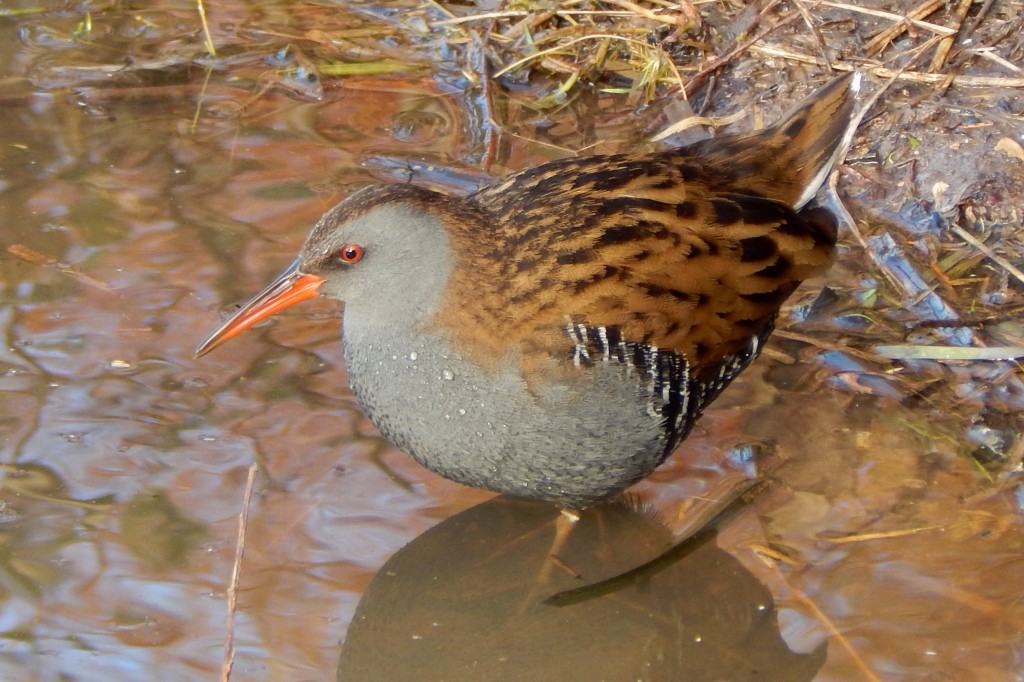



The Water Rail is a wetland bird and is generally seen in or very near reedbeds. It builds a nest in reeds just above the water line. Unlike Coots and Moorhens, Water Rails are not normally seen swimming on the water. When seen they will seek to hide themselves. You may see them very occasionally wading in water as they run between reedbeds.
They are omnivorous, normally feeding on small animals – leeches, worms, slugs and snails, aquatic insects and larvae. They may eat small vertebrates – frogs and toads, fish, birds, mammals and sometimes carrion. They can kill small vertebrates by impaling them with their bills and breaking the spinal cord.
In winter they may eat more plant food – buds, flowers, shoots, seeds, berries and fruit.
The call of the Water Rail is usually described as like a squealing pig.
Habitat
The normal range of the Water Rail is patchy, covering much of temperate Europe and parts of Asia. Over much of its range it is migratory. In the UK It can be found over most of England, Wales and Ireland, and its patchy distribution either resident or migratory.
It lives in wetland areas, particularly reedbeds. See [261] Reeds.
Other Notes
For such a shy bird, normally avoiding humans, it is surprising that they are regularly seen near wetland bird feeders. This is almost always in winter, when they must find it difficult to find other food. The feeders have to be sited very near to water and reedbeds. Wetland nature reserves can often manage to do this near to a building and you can watch from inside the building.
All of my pictures and almost all of my sightings of this bird come from winter bird feeders. They get used to the idea and tend to come back every twenty or thirty minutes to look round and scavenge on the ground.
